标签:des blog http io ar os sp for on
Boost converters, like other switchers, have traditionally received their control signals from a dedicated circuit. However, a recent trend is to integrate simple switching-power-supply building blocks into generic devices, such as microcontrollers. An excellent example of this concept is a microcontroller that combines digital and analog circuitry and makes it easier to build simple power supplies. The programming capability of a microcontroller is an added benefit in power-supply designs, especially when you want to experiment with the supplies. Figure 1 illustrates a simple boost-converter design using a microcontroller; the basic boost topology in Figure 1 is a type of flyback circuit. The basic concept is easy to understand. When the MOSFET, Q, turns on, the current flowing through the inductor, L, begins to ramp up linearly (Figure 2), resulting in energy storage in the inductor. The MOSFET turns off before the inductor saturates. At this time, the inductor releases its energy to the storage capacitor, C, and the load.
You can design a simple boost converter with the following conditions: VIN=9V, VOUT=18V, RLOAD= 72Ω, F=1/T=62.5 kHz, η=70%, and ΔVDROP=50 mV, where F is the switching frequency, η is the efficiency, and ΔVDROP is the output ripple voltage. You can calculate the on-time, current, ramp-down time, and the total period in terms of inductance:
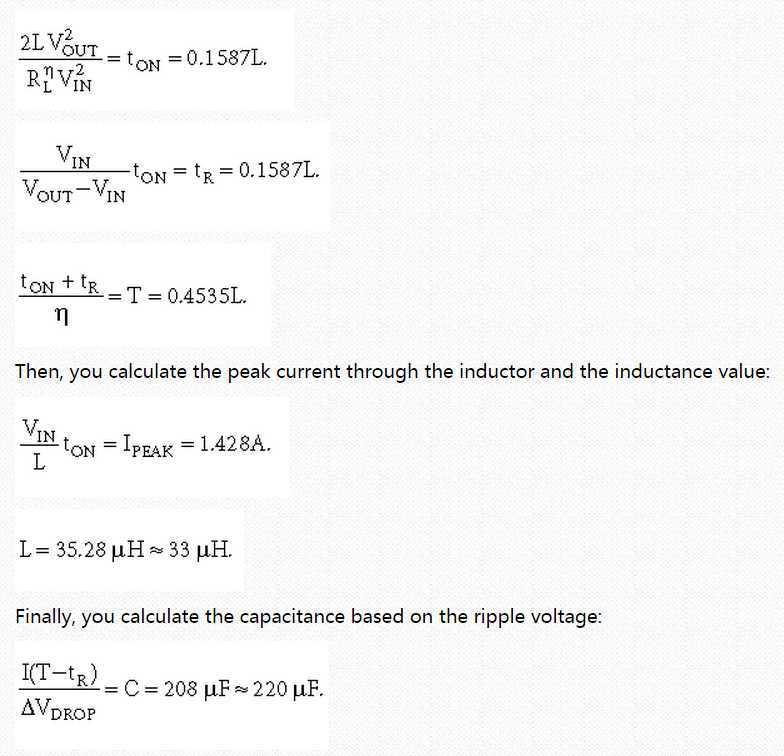
Note that the design is slightly altered to use readily available components, by using a 33-µH inductor and a 220-µF capacitor. The difference in the inductor value is absorbed in the dead time, as is the power loss.
The control circuit can take many forms, especially if you choose a device such as the PIC16C782 microcontroller. This device integrates a built-in analog peripheral set, diverse analog visibility, and a mixed-signal PWM block. The control circuit in Figure 3demonstrates how the analog and pulse-width modulation is contained within the PIC16C782, with the exception of the FET driver. This control circuit combines analog current control and firmware voltage control. The interesting part is the firmware, which is directly in the voltage-feedback path of the control loop. Through firmware, you can alter the dynamics of the control loop by changing the functions within the program. You may be able to design an adaptive power-control system by adjusting the phase and gain to meet the desired needs of a system.
Firmware placement within the control loop is not the only possibility; you could use a combination of firmware and hardware to monitor the system. Because the analog information is visible and the analog functions are controllable within the PIC16C782 device, you can monitor an active system for performance and function. In essence, the system can have self-diagnostic capabilities to check stability, load, input and output conditions, or anything else a system may require. You can also obtain Information about the system, through a serial port or some other means, by routing the data to a terminal or computer display. Even better, the firmware allows the design to change the functions without changing hardware. This approach eases experimentation; you simply changing firmware rather than spending hours in the lab adding or changing parts.
Figure 4 and Figure 5 are oscilloscope photos from a working example of the boost converter implementing the basic topology in Figure 1 and the control block in Figure 3. The peak current in the inductor is 0.3 mV×0.2Ω=1.5A (Figure 4). The on-time is approximately 5.9 µsec. The output voltage is 18V into a 72Ω load (Figure 5). The efficiency is approximately 90%. These boost-converter design and control ideas are just a few of the many possible ones using a PIC16C782 device.

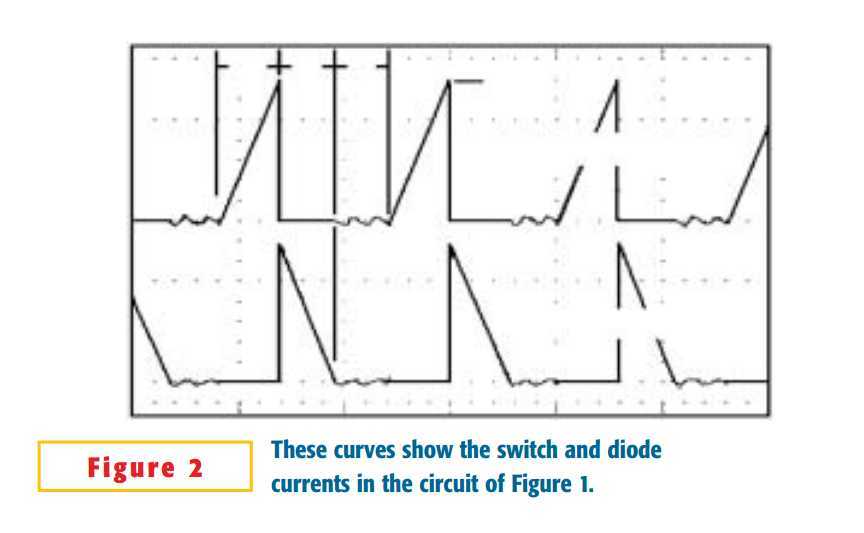
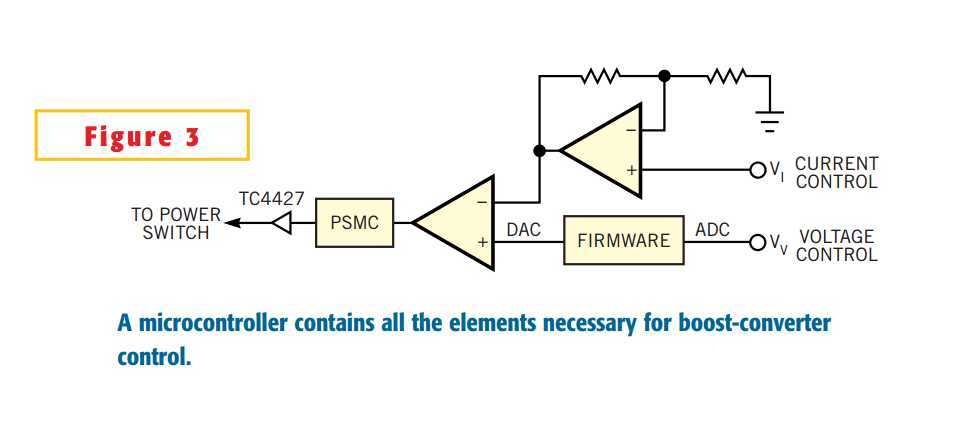
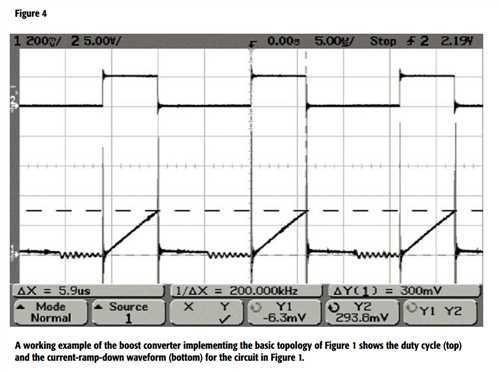
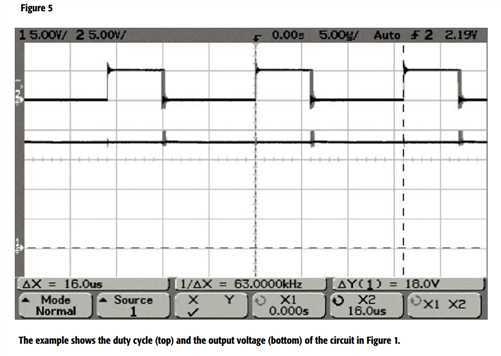
Use a microcontroller to design a boost converter
标签:des blog http io ar os sp for on
原文地址:http://www.cnblogs.com/shangdawei/p/4128324.html